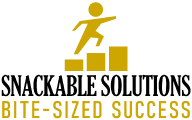The Random Word Exercise
According to Brenden, it’s helpful to practice speaking off the cuff about a random word or topic each day. This helps people to think on their feet, and to be more dynamic in conversation. It’s similar to “Table Topics” that members of Toastmasters International might engage in.
Mirroring
Mirroring is a technique where you emulate the body language and speech patterns of the person with whom you are communicating. The idea is that people tend to like others who are similar to themselves. So, when you behave and speak similarly to a conversational partner, they naturally become more receptive and you’re able to develop rapport with them.
Structure Your Presentation Like a Jigsaw Puzzle
Many presentations have a basic structure to them. There’s an introduction, a body, and conclusion. Kumarasamy recommends using a jigsaw puzzle pattern to the way your presentations are structured instead.
Hi my name is Brenden Kumarasamy and I’m the founder of MasterTalk, a Youtube channel I started to help the world master the art of communication and public speaking. In today’s short video I’ll be sharing three daily public speaking exercises that you can do to work on your communication skills.
Number one: the random word exercise. The random word exercise is fairly simple. All you have to do is pick a random word in the dictionary. It could be couch, or sofa, and practice that presentation. What this does is it improves your ability to communicate subjects that you have no expertise in. Let me do a quick example with “shorts.” It was Sunday morning and as I was enjoying my day, I always liked putting my shorts on. A lot of people will ask me why. Well it’s simple. Shorts are simple ways to live life. Not with pants that are too long and sweaty. Not with jeans that are a bit too tight. But shorts are this amazing garment that’s multi-purpose that allows us to enjoy our day in a way that is simple and relaxing. So this is an example of something completely random that I just invented after looking at my shorts over there in my room. It was through these random words because I’m willing to jump into the discomfort. It reduces my anxiety when I actually talk about my subject matter expertise, which in my case is public speaking and effective communication.
Number two: mirroring. Mirroring is the ability for us to reflect our energy onto the people we speak to. Here’s a great analogy to understand this. Let’s say you wake up in the morning and you look at yourself in the mirror in the bathroom. You’ll show up in either one of two ways. Number one sounds something more like this: “Wow this day is amazing. I get to watch Brenden give a video presentation about his speech.” So I want you to think about the energy which you show up with. Show up with a lot of positivity and that energy gets reflected onto the people around you. But the opposite is also true. You look in that same mirror in the morning and it sounds something like this: “This day sucks. I gotta listen to this video where Brenden is speaking. Why am I even listening to this anyway? Then after I got out of meetings with my work colleagues, then I have to dinner with my family.” Notice how that energy also gets reflective to your audience. So what’s the punch line? The punch line is that the mirror that you look at in the morning isn’t just to get ready. It reflects the very thing that you are, because as speakers we are mirrors we reflect our own emotions onto the people that we speak to.
And finally number three: structure your presentations like a jigsaw puzzle. I always think about speeches like puzzles. You know those puzzle pieces we used to do as kids growing up. So here’s a question I want you to think about: if you’re working on a puzzle, which pieces would you start with first, and why? Most people answer with the edges because the edges are easier to find, because the corner pieces have a little edge to them and then you work your way into the middle. That’s mostly what people answer and that would be correct. The question we’d ask ourselves is why don’t we do that in public speaking? Most of us do the opposite. We start with the middle. We shove a bunch of content in our presentations, we ramble throughout the whole thing, and the last slide sounds something like this: “Uh like um yes no thanks.” That’s how most of us present, but instead what I encourage you to do is practice your presentations, practice your speeches, and your keynotes like a jigsaw puzzle. But remember much like every great puzzle master or anyone who does puzzles you know that if you’re working on a thousand piece puzzle you probably don’t want to do it alone. So have a team that helps you, whether it’s your friends, your family, a coach, a toastmasters group… it doesn’t really matter. The key is work on the public speaking puzzle as a team, and that’s how it’ll be more successful.
So once again, to recap random word exercise, mirror energy effectively, and present and practice your presentations like a jigsaw puzzle, and i think you’ll be 10 steps closer to mastering your talk. Take everyone, cheers.

Facebook Comments